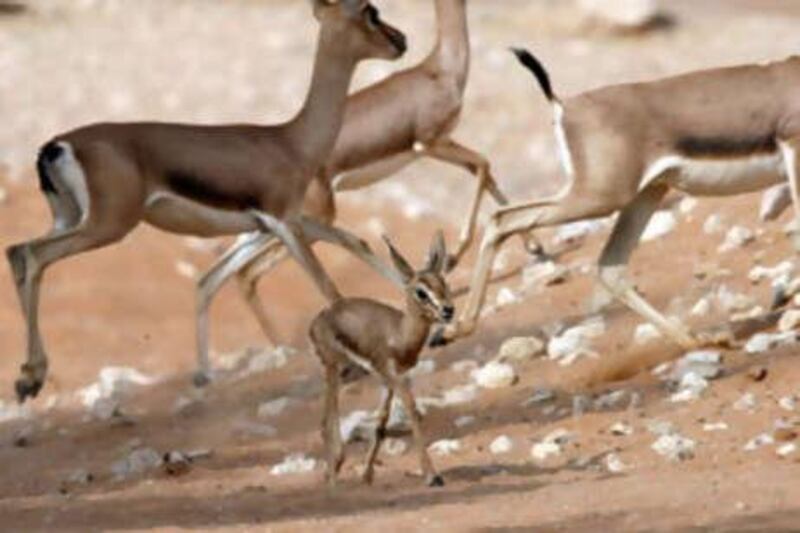AL AIN // As the hot sun fades behind the mountain backdrop of Al Ain Zoo, hundreds of animals stretch their legs in the shade of their dusty dens as a fine, cooling mist caresses their coats. While most UAE residents are running indoors each evening to relax in their air-conditioned homes, away from the suffocating midsummer humidity, the 4,000-plus inhabitants of Al Ain's most popular tourist attraction are enjoying a considerably less hermit-like existence thanks to rows of water-misting machines.
Staff say the misters have transformed the lives of some of the zoo's 150 species not used to the hot desert conditions. "The summer and the hot weather is a challenge, both for visitors and the animals," says Mark Craig, the zoo's director. "What we have tried to do is to make it as comfortable as possible for both." That comfort arrived two years ago in the form of more than 50 misting machines to cool the lions and some primates, including the zoo's one female gorilla. Between June and September, the misters spray cool water on the animals for 10 minutes every half an hour, between 4pm and 10pm.
"Many of the animals, like the Arabian Oryx and gazelles, are from this part of the world and so are adapted to these conditions," says Mr Craig. "They don't need special treatment as long as they have shade, the ability to get out of direct sunlight and access to water. "But for the other animals at the zoo, which are not from this part of the world, such as the gorilla, we have to ensure their needs are met. This does not just mean providing shade, or the misters, but also allowing them access to an off-exhibit area where there is air-conditioning."
It is 7pm, and a male lion yawns and slowly rises from his shaded patch, followed by his two companions. Having spent most of the day in an air-conditioned off-exhibit area, like many of the animals in the zoo, they are ready for feeding time, to the delight of the crowds of onlookers. Mr Craig says animals, like humans, are more lethargic during the summer - one of the main reasons the zoo has changed its opening hours to 4pm to 10pm for the summer.
"They don't become aggressive, but the best thing to do is to just leave them alone," he adds. "As soon as you try to make them do certain things, you're asking for trouble. They just adapt. They go to a shady area and they rest - you won't see them running around. "But in the night, as the sun sets, the primates become very active. Visitors will see them playing around and jumping in the water."
While some zoos feed animals frozen meat and hose them down, Mr Craig believes the Al Ain Zoo's methods are more effective. "You can use ice with certain species, but we don't have aquatic animals because we are a desert-themed park and, with so many animals, it is not feasible to be freezing hundreds of blocks of ice," he says. "Besides, freezing a piece of meat in a block of ice means the animal has to use a lot of energy to eat it, which they want to conserve during the hotter months.
"During the summer, the animals don't tend to eat as much, much like humans, so we switch the time of their feeding from early morning to early evening. They have access to some food during the day, but their main feed is now at around 7pm to 7.30pm." A group of visitors alighting from a small mechanised "train", which ferries guests to and from the main entrance and around the zoo's various attractions, are met with the same fine mist that cools down the gorilla just a few metres away.
"Changing the timing really has made a big difference to people's comfort," Mr Craig adds. "When you're wandering around at 8pm in the evening in the summer, it's a very pleasant experience." @Email:loatway@thenational.ae





